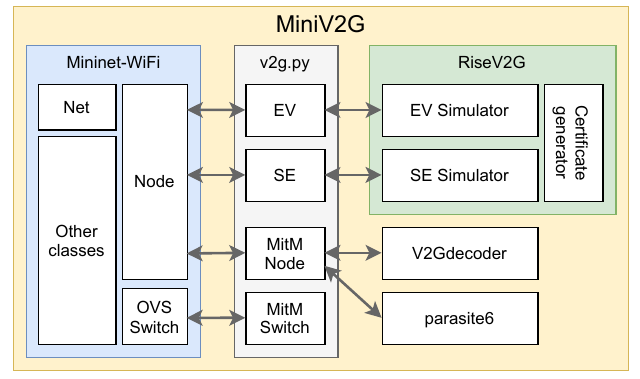The impact of global warming and the imperative to limit climate change have stimulated the need to develop new solutions based on renewable energy sources. One of the emerging trends in this endeavor are the Electric Vehicles (EVs), which use electricity instead of traditional fossil fuels as a power source, relying on the Vehicle-to-Grid (V2G) paradigm. The novelty of such a paradigm requires careful analysis to avoid malicious attempts. An attacker can exploit several surfaces, such as the remote connection between the Distribution Grid and Charging Supply or the authentication system between the charging Supply Equipment and the Electric Vehicles. However, V2G architecture's high cost and complexity in implementation can restrain this field's research capability.
In this project, we approach this limitation by proposing MiniV2G, an open-source emulator to simulate Electric Vehicle Charging (EVC) built on top of Mininet and RiseV2G. MiniV2G is particularly suitable for security researchers to study and test real V2G charging scenarios. MiniV2G can reproduce with high fidelity a V2G architecture to easily simulate an EV charging process. Finally, we present a MiniV2G application and show how MiniV2G can be used to study V2G communication and develop attacks and countermeasures that can be applied to real systems. Since we believe our tool can be of great help for research in this field, we also made it freely available.
MiniV2G is a project built on top of Mininet-WiFi and RiseV2G. It enables easy access to V2G simulations.
The V2G infrastructure architecture, depicted in the MiniV2G architecture figure, is composed of five entities: the EV, the Charging Stations (CSs), which is an aggregator of one or more EVSEs, the Control Center (CC) interconnecting points between CSs, and, finally, the smart grid to which all EVSEs are connected.
MiniV2G architecture:

MiniV2G Graphical User Interface (GUI):
